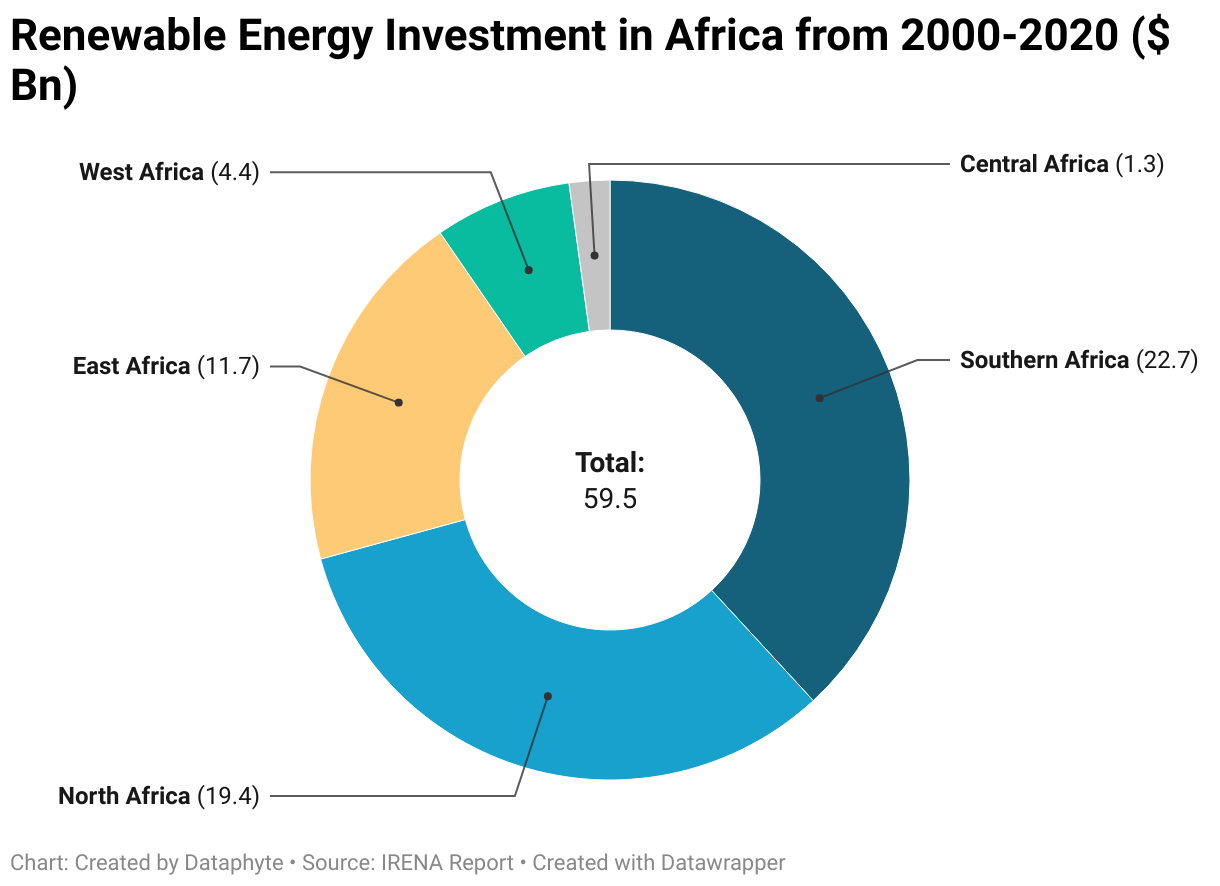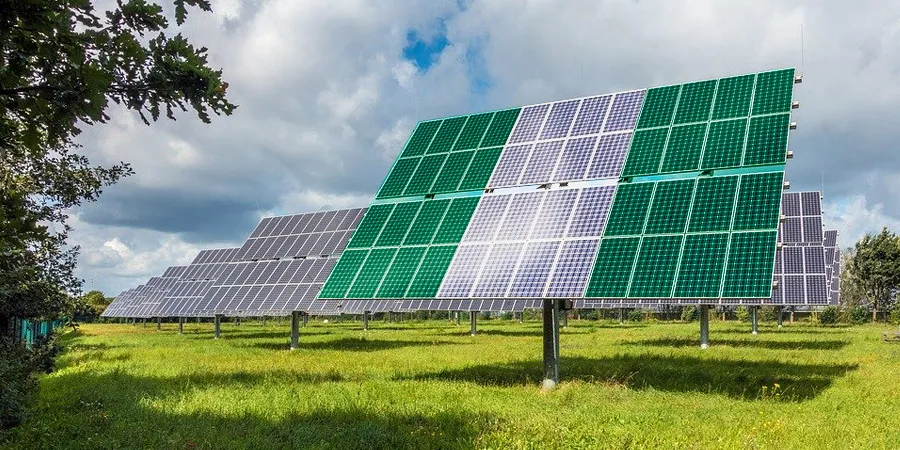Clean energy is energy that comes from renewable, zero-emission sources that do not pollute the atmosphere when used and the good news is that Nigeria is blessed with renewable energy resources like wind, solar, biomass and hydropower. Nigeria’s primary energy carrier is biomass (81.25%), followed by natural gas (8.2%), petroleum products(5.3%), crude oil (4.8%), hydropower (0.4%), and others (< 1%).
At the just concluded COP26, Nigeria committed to net-zero emissions by 2060 and the availability of clean energy sources makes the commitment not so daunting. A recent article published in Climate Policy shows that standalone solar and hybrid mini-grids could provide modern energy access to over 88 million Nigerians by 2030.
However the question of access remains as Nigeria has continued to struggle to meet the energy demands of its citizens. Despite privatisation of the power sector in 2013, things have not improved and some reports say the sector has deteriorated even more.
If Nigeria can’t meet demands with its current capacity, how will it tackle the challenge of generating and distribution of clean energy.
Clean Energy Demand
An estimated 85 million people lack access to electricity, and 176 million people lack clean cooking fuels or technologies.
According to SE4All Action Agenda, the country’s power system is characterised by a massive gap between supply and demand. The current power demand is estimated at 17,520MW, including latent and suppressed demand, against 5,300MW peak generation capability. Despite the 13,000MW installed capacity eight years after the sector was privatised, power generation still hovers just above 5,000 MW.
To bridge this gap, Nigeria plans to generate 30,000MW by 2030, and 3,000MW of the promised increment will be from renewable energy sources to serve its over 200 million people.
Renewable energy is touted as one of the ways to bridge the energy supply gap in Nigeria as well as drive sustainable development especially for disadvantaged groups.
The book, Financing Climate Futures: Rethinking Infrastructure posited that a clean energy revolution is needed urgently in sub-Saharan Africa to win the fight against energy poverty, promote robust development, and make it more sustainable. “Clean energy can unlock sustainable economic growth, improve human health and well-being and enable women and children to lead more productive lives. “It will also raise human security and build resilience in nation-states and communities.”
What has Been Promised by the Government to Enable Clean Energy Access?
During the COP26 summit in Glasgow, President Buhari pledged that Nigeria would cut its carbon emissions and reach net-zero by 2060. He also underlined the crucial role of gas in the country’s energy transition roadmap.
The federal government committed to delivering and maintaining 5 million new solar connections under a ‘solar power strategy’ as Nigeria’s plan.
This strategy is expected to support 250,000 new jobs and impact up to 25 million beneficiaries. The plan will also support the upstream value chain by promoting the large-scale assembly of solar components in Nigeria.
The Federal Government has also said it would distribute 10,000,000 cylinders of the Petroleum Liquefied Gas into circulation nationwide to increase access to the commodity.
Some of these initiatives are tied to the Sustainable Energy for All Agenda which Nigeria, alongside 44 other African countries signed on to to advance sustainable energy and increase access for all Africans.
Impact of Covid-19 on Clean Energy Progress
Data on Sustainable Development Goal 7 (SDG7) – shows that progress in Africa is not yet on track to meet global targets. An estimated 565 million people still lack access to electricity, while 900 million lack clean cooking solutions. The covid 19 pandemic only expanded the deep divide in Africa on energy access progress.
For Nigeria, Covid-19 led to, among other things, supply disruptions and falling investments in the Nigerian off-grid renewable energy sector, with adverse implications for energy access goals. The pandemic induced lockdowns highlighted more than ever the energy poverty challenges across the country.
Nigeria is said to be one of the fastest growing markets for solar, and is the 5th largest market in terms of volume of solar products sold although the Nigeria Solar Report puts the contribution of solar to energy generation in Nigeria at a mere 1.1%.
Individuals have increasingly turned to solar energy to reduce the burden of powering fuel and diesel generators on which Nigerians spend an estimated $22bn annually.
Unfortunately, solar energy equipment is still largely imported. About $150m worth of solar equipment were imported into the country in 2019 and China is the biggest supplier of solar equipment to the country. So when the pandemic hit and countries were shut in, the supply of solar energy equipment dried up.
Dapo Olarinde, a solar energy expert and solar off-grid operator described the supply disruptions as significant, Nigerian businesses who relied on solar-powered energy and those looking to transition to the cleaner source of energy which is also cheaper than diesel or petrol powered generating sets in the long-term found themselves in limbo. Both the supply side and demand side suffered economic losses directly related to the lack of access to solar and recovery has been slow as the world is trying to figure out a new normal with Covid 19.
Governments worldwide launched large-scale fiscal stimulus packages and expansionary monetary policies to counteract the pandemic-induced economic downturn. These packages and policies captured “green” investments, including renewable energy, to offset the drawback on net-zero emissions goals.
Nigeria’s COVID-19 economic recovery plan, also includes support for off-grid renewable energy. Only three countries in Sub-saharan Africa targeted renewable energy specifically in their recovery plans.
Financing Clean Energy Access
According to the International Energy Agency (IEA), the level of investment required to achieve universal access in Sub-Saharan Africa is estimated to be US $27 billion per year (2018-30), which is at least double current levels of financing – highlighting the need for significant increases from domestic sources and international sources.
Nigerian President Muhammadu Buhari announced last year that the country would need more than $400 billion to reduce dependence on fossil fuels and successfully implement energy transition.
 IRENA’s recently released report, however, revealed that West Africa attracted comparatively little investment – USD 4 billion, over the period of 10 years (2010-2020) for renewable energy. Of the total investments, Nigeria accounted for a total of USD 509 million investment (21%), and is Africa’s second-largest recipient of off-grid renewable energy commitments during the past decade.
IRENA’s recently released report, however, revealed that West Africa attracted comparatively little investment – USD 4 billion, over the period of 10 years (2010-2020) for renewable energy. Of the total investments, Nigeria accounted for a total of USD 509 million investment (21%), and is Africa’s second-largest recipient of off-grid renewable energy commitments during the past decade.
Nigeria is followed by relatively similar shares of 10-15% in Senegal, Mauritania, Ghana, Sierra Leone and Burkina Faso.
The recent growth was driven mainly by a surge in commitments, following the launch of the Regulation for Mini-Grids by the Nigerian Energy Regulation Commission in 2017.
Attracting Partnership and Investment for Clean Energy Access
To achieve clean energy access in Nigeria, which can spur progress across almost all other SDGs, stakeholders and the Nigerian government have called for investment and partnership into gaining environmentally sustainable, reliable, affordable, and climate-resilient access to energy.
While Nigeria’s commitments to sustainable and accessible clean energy appear obvious, perennial problems of corruption, lack of political will are potential detractors that may hinder the country from achieving set goals.
The Program Manager, Natural Resources, Extractive and Climate ChangeProgramme (NAREP) at the Centre for Journalism Innovation and Development, Akintunde Babatunde, told Dataphyte that Nigeria’s energy system challenge despite being blessed with abundant renewable energy resources is a leadership problem. He explained that it has affected all the sectors and renewable energy is not left out.
Mr Akintunde said the current energy supply mix in the country is still not utilizing the renewable natural resources to the maximum, which made the President during COP26 call for investors and partners because the country is energy poor.
While lamenting that many Nigerians still rely on charcoal, firewood, and all for energy consumption, he blamed this on the country’s shallow energy consumption pattern. According to him, this inefficient use of renewable energy supplies is not expected for a developing economy.
However, he urged the government to develop a proper energy transition plan and create a conducive environment to attract foreign investment and partnership.



